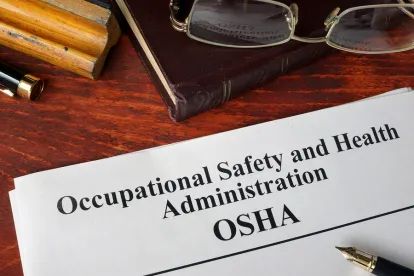We have issued several recent alerts regarding potential new Occupational Safety and Health Administration (OSHA) COVID-19 standards, particularly in light of the new Biden administration. Indeed, within the first 48 hours of his presidency, President Biden issued an Executive Order directing the Labor Department to “take swift action to reduce the risk that workers may contract COVID-19 in the workplace.” Guidance OSHA issued on January 29, 2021, (the “Guidance”) suggests that OSHA is taking the president’s charge seriously and edging ever closer to issuing binding COVID-19 legal requirements.
Importantly, the Guidance, titled “Protecting Workers: Guidance on Mitigating and Preventing the Spread of COVID-19 in the Workplace,” does not create a new standard or regulation. In other words, the Guidance is not legally binding. Instead, it is general guidance across industries designed to help employers and workers identify COVID-19 risks and ways to implement appropriate control measures.
Many of the suggestions in the Guidance are old hat to employers now. The Guidance suggests employers implement a robust COVID-19 prevention program, and further recommends that the program’s development include an interactive process with employees and, if applicable, unions as well. Steps included in the program development include: conducting a hazard assessment; identifying a combination of measures that limit the spread of COVID-19 in the workplace; adopting measures to ensure that workers who are infected or potentially infected are separated and sent home from the workplace; and implementing protections from retaliation for workers who raise COVID-19-related concerns. As for specific protections, such protections are things that we have all become accustomed to in the past 10 months—maintain social distancing, implement physical barriers where that is not possible, wear a face covering, improve ventilation in the workspace where feasible, and practice good hygiene such as washing hands often. All protective measures should be explained to workers in plain language (and in a language they understand) to ensure all employees know what is expected of them.
However, one aspect in the Guidance we have not seen a great emphasis on before relates to vaccinations. The Guidance recommends developing a vaccine or vaccine series available to workers at no cost. With those vaccinations, employers should also educate workers about the benefits of receiving the vaccine. But even as more workers become vaccinated, OSHA recommends that employers do not distinguish between vaccinated and unvaccinated workers. The Guidance emphasizes that all workers should maintain the same protective measures (i.e., distancing, mask-wearing, etc.) regardless of their vaccination status because it is still not understood how vaccinations may impact the virus’ transmissibility.
While the Guidance is not binding, it may offer a preview of formal OSHA standards and regulations on the near horizon. Employers would be wise to start exploring and implementing the recommendations now to the extent they are not already in practice, and should further consult counsel to ensure their practices are consistent with the most up-to-date OSHA requirements.




 />i
/>i
